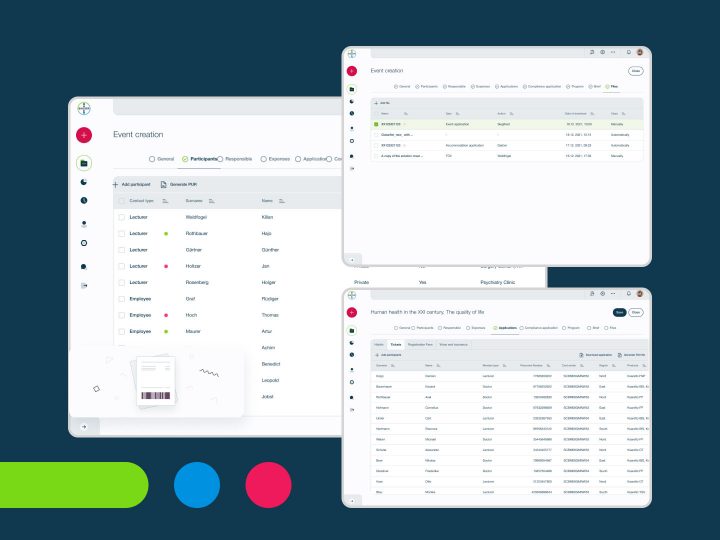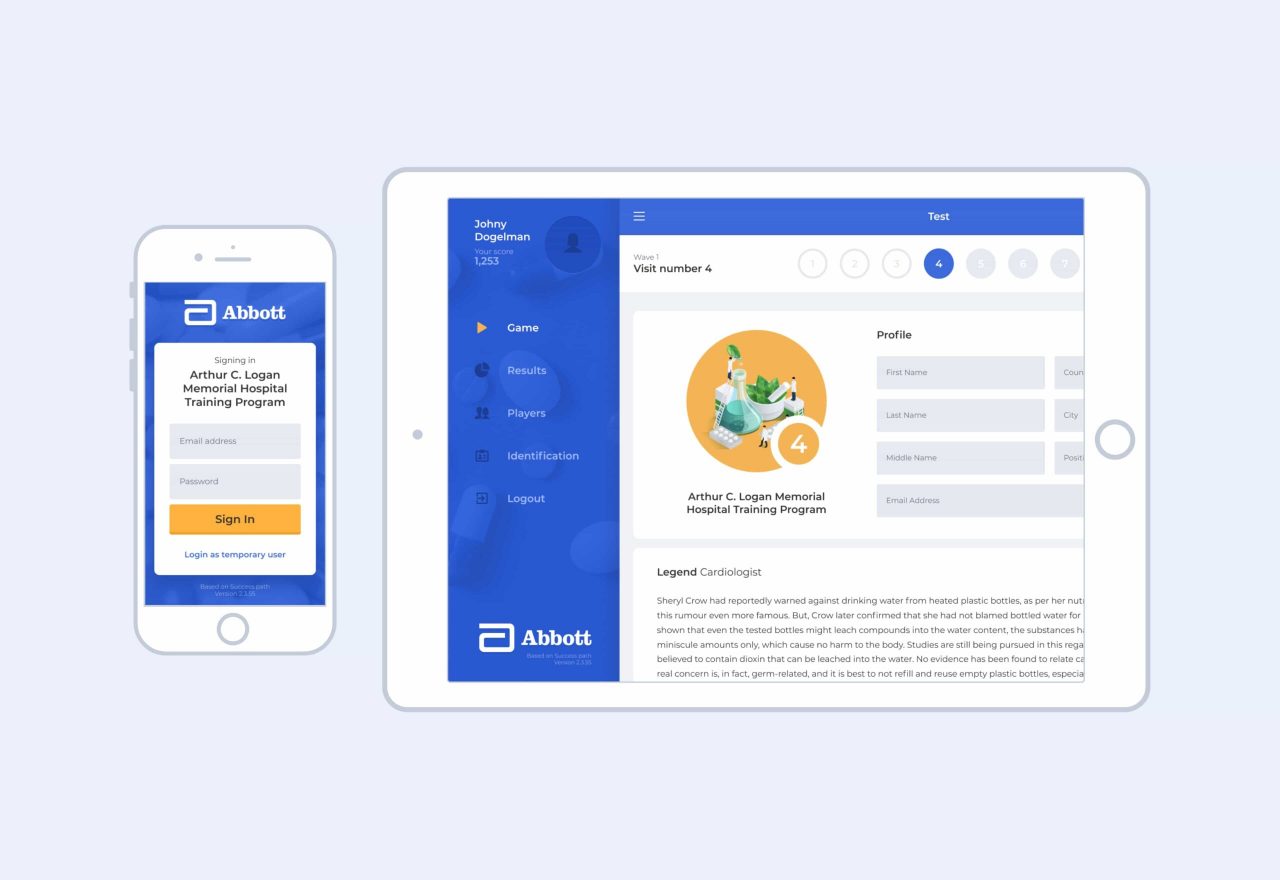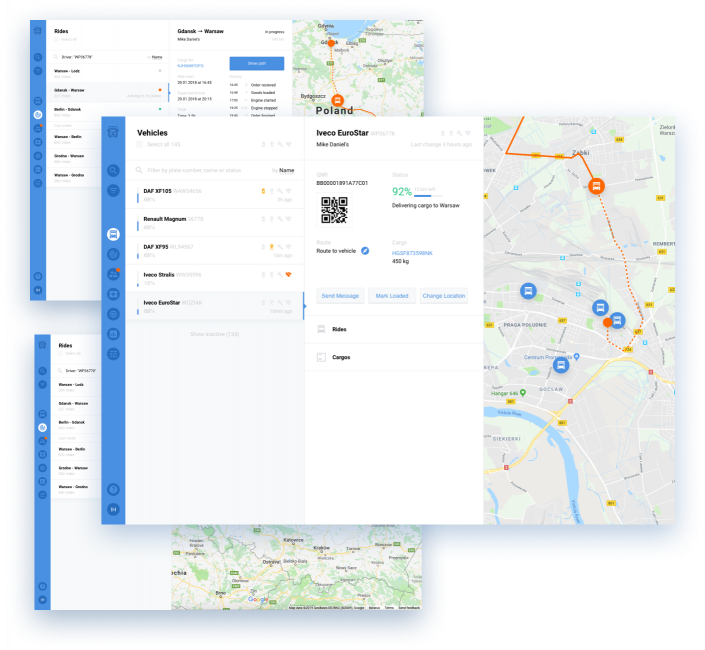Foreword
Isn’t it great when you find that one person or place that suits you perfectly, makes your life easier and simply happier?
The same goes for software. For your business operations to go as smoothly as possible, you need software that allows you to tackle challenges instead of creating new ones. Luckily, that’s exactly what custom software development aims to create.
Like a bespoke suit, custom software fits your every requirement and makes your company better, more efficient, more customer-oriented, and all in all, more successful.
When it comes to custom software development, SENLA has hundreds, if not thousands of projects under the belt, thus, we can share tons of knowledge.
In this article, we will explain what custom software development is, how we approach it and give examples of how it’s used in various industries based on the projects we worked on.
On the spot
Custom software development is the process of designing, creating, deploying, and maintaining software specifically tailored to the unique needs of an individual or organization.
We carry out this process in several stages, including:
1) Analysis of the requirements
2) Discovery phase
3) Design
4) Development
5) Testing
6) Deployment
7) Maintenance and updates
Our Clients turn to custom software development when they need more than off-the-shelf software in terms of features, adaptability, scalability, and security.
Many industries benefit from custom software development including:
⦿ Finances - for customer-oriented online platforms
⦿ Healthcare - for managing patients' data
⦿ Retail - for creating e-commerce platforms
⦿ Education - for designing learning management systems
⦿ Manufacturing - for tracking supply chains
⦿ Hospitality - for facilitating bookings and communication
⦿ Logistics - for analyzing operations
However, some challenges come with custom software development and need special attention when figuring out the process. The three main ones are resource management, scope creep, and long-term maintenance of the product.
To tackle these challenges, we prioritize effective communication with a Client, finding a suitable development model, and thorough planning of the development.
Want to see how? Read on!
What is Custom Software Development?
In basic terms, custom software development is the process of designing, creating, deploying, and maintaining software specifically tailored to the unique needs of an individual or organization.
This term is often used in contrast with off-the-shelf software i.e. prepackaged ready-made applications available to anyone: your Salesforces, Mailchimps, Jiras, and so on.
Unlike off-the-shelf software, custom software is built to accommodate specific requirements and preferences, which makes it an excellent fit for businesses with unique operational methods or niche market needs.
Obviously, the product itself will be unique so it’s hard to pinpoint the exact characteristics of the custom software besides the way it’s developed.
In terms of what it 'looks like,' custom software is typically designed to fit seamlessly into a business's operations, thus, its interface should be intuitive for employees to use, and the functionality should align closely with the company's workflows. The software should also integrate smoothly with any other systems the business uses.
Custom software development at SENLA involves a multi-step process that typically goes through the following stages:
- Requirements analysis and research: This initial phase involves identifying the needs of our Client and defining the scope of the project. Meetings are held between the development team and the stakeholders to gather detailed requirements and establish project goals.
- Design: In this phase, we design the software architecture. The user interface, databases, and system interfaces are all part of this design process. Wireframes and prototypes may be created at this stage.
- Development: The actual coding and building of the software happen during this phase. Depending on the scale and complexity of the project, this stage can be split into several sub-stages and might follow different development models.
- Testing: After the software is developed, it is thoroughly tested to ensure it is functioning as expected and to identify any bugs or issues. SENLA provides different types of testing, and you can pick and choose which methodology fits your needs.
- Deployment: Once the software passes all tests, it's deployed to the live environment. This can be done all at once or gradually, depending on the deployment strategy.
- Maintenance and updates: After deployment, the software requires regular maintenance to ensure it continues to function properly and stays up-to-date. This includes fixing bugs, updating the system to adapt to new requirements, and improving the software based on user feedback. The maintenance protocol is also discussed with the Client to make sure it aids their business and doesn’t interfere with its operations.
Throughout the process, our development team works closely with the stakeholders, who review progress, make decisions, and provide feedback. This iterative process ensures the software is tailored to meet the needs of our Client’s business.
Remember that custom software development is a collaborative process that requires active participation from all stakeholders to ensure the final product meets the business's needs. Communication and feedback are essential for a successful custom software development project.
Why Opt for Custom Software Development?
Custom software development offers numerous advantages that make it an attractive option for many businesses. For instance, some of the companies we worked with include Yahoo, Bayer, and Bosch.
Firstly, you should consider custom software development when your requirements cannot be fully met by existing off-the-shelf solutions.
If to carry out specific operations you need three different SaaS’ that still don’t fully support what you need to do, maybe investing in a custom software development is the better option.
Custom software is specifically designed to accommodate these unique requirements, helping your business streamline operations, increase productivity, and provide better services to your customers.
This bespoke approach enables a software solution to fit your business perfectly, rather than forcing you to adapt to an off-the-shelf solution and change your requirements and plans.
The second reason to try custom software development is if you aim for growth and scalability.
As your business expands, off-the-shelf software that initially seemed sufficient might become inadequate or costly due to licensing or scaling issues. In contrast, custom software can be built with future scalability in mind.
As the business evolves, the software can be easily modified and scaled to accommodate growth, making it a more cost-effective solution in the long run.
In addition, if your business operates in specialized or niche sectors should also consider custom software. In this case, you often have unique processes that generic software solutions cannot adequately address. With custom software, you can automate your unique processes, enhancing efficiency and creating a competitive advantage.
Lastly, security-conscious businesses or those dealing with sensitive information should lean towards custom software development. Custom software can provide a higher level of security compared to off-the-shelf solutions, as can be equipped with tailored security features unique to your company.
Experience Efficiency Like Never Before
Let's see how custom software development can revolutionize your business

7 Real-world Examples of Custom Software Development
So now that you know which conditions prompt you to consider custom software development, let’s dive into the actual examples we worked on.
Who are the Clients that use custom software development to streamline business operations and boost their profit? What goals do they accomplish with it?
To answer these questions, here are seven examples of custom software development across various industries from our practice:
1. Banking and Finance: Online Banking Platforms
You can probably guess that the software banks need the most is a custom online banking platform. It allows their customers to check balances, transfer funds, pay bills, and apply for loans. This software needs to integrate with the bank's internal systems, follow specific regulations, and provide high-level security to protect sensitive financial information.
It may also include features tailored to the bank's particular services or customer base, such as investment tools or financial planning resources.
SENLA often works with banks to provide new software solutions or update the ones they are already using. For example, recently we developed a new data-storage solution for a European bank to enhance security and meet the rising customer demand.
SENLA helped migrate the credit risk calculation solution to an open-source on-premise distributed data storage platform. In addition to security, the solution provided the ability to access the data offline so that server outages wouldn’t affect the business process.
2. Healthcare: Managing Patients’ Data
Another industry where you often see examples of custom software development is healthcare.
Many medical centers and healthcare providers create custom patient management systems to handle everything from appointment scheduling to medical records.
The software needs to comply with healthcare regulations like HIPAA (in the U.S.), protect patient privacy, and integrate with other systems for lab results, imaging, billing, and more. Custom features could include telemedicine capabilities, patient portals, or analytics to track patient outcomes.
In addition to that, there are many situations where custom software development can facilitate healthcare provision by aiding different processes inside a company.
For example, Bayer, a pharmaceutical company, turned to SENLA to design and develop a custom software solution for planning and hosting large-scale events for their employees, partners, scientists, and researchers.
We were successful in combining requests from many different departments that would be using the product and finding the solution that corresponds to all the different tasks inside the company. One program was able to cover everything, from providing chat features to enable communication to facilitate budgeting for the events and tracking their KPIs.
3. Retail: Creating E-commerce Platforms
Online stores may require a custom platform or a custom modification of an off-the-shelf solution that will properly manage its inventory, sales, customer data, and analytics.
Typically, this custom software includes special features like a recommendation engine, integrated shipping and tracking, and a unique user interface that matches the brand's aesthetic. It also needs to integrate with payment gateways via APIs and provide robust security to protect customer data and financial transactions.
One of the examples from our own experience of working with a retail company was our project with a large chain of stores in America selling tires, wheel disks, and car accessories. SENLA was a part of their multi-stage program to improve and refine their site and add information processing from the point-of-service (POS) system.
As a result, we updated the configuration and the Hybris platform. We have developed some new functionality, such as "my account" cabinet, and implemented a convenient display of customer orders and a list of planned services. The work was built around receiving and sending data to a remote server aggregating information about orders and services.
Additionally, we compiled a list of features, which were further considered by the Client for subsequent development and improvements.
4. Education: Designing Learning Management Systems
Educational institutions oftentimes require custom software development to facilitate online and offline learning of their students.
One such tool is a custom Learning Management System (LMS) that handles course registrations, content delivery, grading, and communication between students and professors. The features included in LMS may vary, for example, there can be a tool for peer review of assignments, integration with academic databases, or special accessibility features for students with disabilities.
Educational software and LMS have applications even beyond universities and schools.
For example, SENLA worked on a project with Abbott — a medical devices manufacturer — aimed at training their employees. We created a custom platform that tackled creating and planning seminars and gathering data about employee training programs in just four months!
As a result, the Client received a solution that united L&D’s, HR’s and Admin’s requirements and optimized a process that took weeks to just a few hours.
5. Manufacturing: Tracking Supply Chains
Many challenges in manufacturing can be met by designing a custom software solution.
For example, manufacturing companies often create custom supply chain management systems to track and optimize their production processes. The software might integrate with machine sensors for real-time monitoring, provide analytics to identify bottlenecks or inefficiencies, and include features for inventory management, quality control, and shipping logistics.
Moreover, custom software development enables businesses to design custom hardware that works with it perfectly.
For example, SENLA developed a solution for Schlumberger that consisted of hardware and software elements empowered by data science.
The Client needed a gadget to quickly identify equipment used in the operations. SENLA created the scanner and the software to go with it which was able to identify parts in less than 5 seconds.
This product cut out hours of work and the possibility of human error from Schlumberger’s processes.
6. Hospitality: Booking and Customer Communication
In the hospitality sector, custom software development is instrumental in streamlining operations and enhancing guest experiences.
For instance, a hotel chain might leverage bespoke software solutions to devise a sophisticated booking system, tailored to the hotel's unique needs. To ensure superior guest communication and drive loyalty, the system can incorporate special features like a dedicated loyalty program. This program rewards frequent guests, encouraging repeat bookings and enhancing customer retention.
Furthermore, the custom software can integrate with popular travel websites, ensuring broader visibility and increasing booking opportunities.
One of the projects we worked on was with Travelopo, a UK-based short-time rental company that was required to integrate its own service with the Salesforce ecosystem and third-party resources, in particular with Jira.
Our specialists created a solution that solved a discrepancy in the description of apartments and houses occurring sometimes between Salesforce and Jira.
We also added some minor improvements to the existing system and developed a new system of custom reports to analyze and track Client’s operations.
7. Transportation and Logistics: Tracking Packages and Analyzing Operations
Here, custom software development aids with increasing operational efficiency. Oftentimes, companies create custom software to track packages and transport. This not only enhances transparency but also enables customers to stay informed about their shipment's status at any given moment.
Further, the custom software also plays a pivotal role in fleet management, ensuring the most efficient use of transport resources. It can help monitor vehicle health, driver performance, and fuel usage, facilitating informed decision-making and optimal fleet utilization.
The system can also include route optimization features, integrating GPS and real-time weather data to propose the most efficient delivery routes, and incorporate analytical tools to evaluate operational efficiency and suggest areas for improvement.
One of the projects we worked on was dedicated to managing the storage and shipping for the leading Cambodian goods carrier.
SENLA has developed a yard management solution that helps track the movement of goods in the warehouse, respond promptly in a real-time system to the flow of goods to the warehouse, as well as help coordinate shipments.
As you see, custom software development is a popular answer to a manifold of issues and challenges. In SENLA’s experience, almost any industry can benefit from a custom solution that assists its everyday operations.
3 Common Challenges in Custom Software Development (and How We Overcome Them)
While custom software development provides numerous advantages, it also comes with potential challenges that need to be managed effectively.
1. Resource Management
Resource management is a critical aspect of any project, but it can be especially challenging in custom software development for several reasons:
Talent Management
Skilled software developers, especially those with expertise in specific technologies or domains, can be hard to find and retain. Allocating the right people to the right tasks is crucial for project success.
If a key team member leaves during the project, it can result in delays and increased costs. That’s why we in SENLA have a policy to ensure that whenever one team member goes on holiday, a different employee replaces them immediately.
Furthermore, we greatly focus on balancing the workload to prevent burnout while keeping the project on schedule. Among other measures, SENLA’s team members are obligated to go on vacation once a year at least for half of the period guaranteed by labor laws. SENLA’s culture also discourages working overtime, aiming to find alternative solutions for meeting deadlines.
Budget Constraints
Custom software development can be expensive, and costs can escalate if the project scope is not strictly managed. Unanticipated issues, requirement changes, or delays can push the project over budget, making effective financial resource management critical.
Time Management
Time is a vital resource in project management. Developing custom software often involves multiple interconnected tasks and stages, each with its own timeline. If one task is delayed, it can impact the entire project schedule. Moreover, coordinating the schedules of all team members and stakeholders for meetings, reviews, or collaborative tasks can also pose difficulties.
For effective resource management, we use proactive planning, continuous monitoring, and efficient allocation of all resources. We also utilize all well-known project management tools, implement agile methodologies, and keep open lines of communication to address these challenges.
We have enough resources inside the company to make our planning effective. For example, we boast more than 5,000 man/days of development in Java technologies and to 5,000 man/days of development in motion design.
2. Scope Creep
Scope creep refers to the tendency for the project requirements to expand beyond their initial boundaries throughout a project. In custom software development, scope creep presents several challenges:
- Time and Budget Overruns: When new features or changes are added midway through the project, it can significantly increase the time needed for development and testing, leading to delays in the project timeline. Similarly, these additional features and changes often require more resources to implement, which can result in exceeding the original budget.
- Quality Risk: When the scope expands, the focus can shift from delivering quality work to simply trying to incorporate all the added features. This hurried approach can compromise the quality of the software and lead to bugs or performance issues.
- Customer Satisfaction: Continually changing expectations can lead to dissatisfaction for all stakeholders. If the project does not meet the expanded expectations, or if it exceeds the timeline and budget due to scope creep, it can lead to a perception of failure, even if the original objectives were met.
We manage scope creep with clear communication, strict change control processes, and strong project management. We also ensure that we have a detailed and agreed-upon project scope at the start, and any changes to this are carefully considered for their impact on time, cost, resources, and quality.
3. Long-term Maintenance
While custom software development makes you less dependent on the whims of a software provider, long-term maintenance can be challenging even with full control.
Here are some points to factor in when thinking about maintenance in custom software development:
- Ongoing Costs: Maintenance includes fixing bugs, updating software to meet changing user needs or to comply with new regulations, and improving functionality over time. This continual process can be costly, especially if not adequately planned for in the project's initial budget. As technology advances, the software may need to be updated to stay compatible with other systems or to keep up with industry trends and standards. However, making these updates can be complex and resource-intensive, particularly if the software was not originally designed with future compatibility or scalability in mind.
- Technical Debt: During development, teams may take shortcuts or use temporary fixes to meet deadlines. Over time, these "quick fixes" can accumulate into what's known as technical debt, making the software harder to update and maintain in the future.
- Documentation: If the software's documentation is poor or incomplete, it can make maintenance more difficult. Good documentation is critical for understanding how the system works, especially for new developers or when making changes or updates.
Since we provide long-term maintenance on a lot of our projects, we always factor it into the initial planning and budgeting stages. Regular code reviews, good documentation practices, and using commonly known and using future-proof technologies are what also help us in managing these challenges.
Conclusion
Ultimately, custom software development is not just about building software; it's about building a solution that fits your business perfectly.
It's a collaborative and iterative process that requires active participation from all stakeholders and a development team that understands your business, your industry, and your unique needs. When done right, it becomes an investment that yields significant returns in terms of increased efficiency, productivity, and customer satisfaction.
If you find yourself in need of a custom software solution that checks all your boxes, don’t hesitate to reach out to SENLA: we can provide consultation, staff, and full-on dedicated teams to help you reach your goals.





